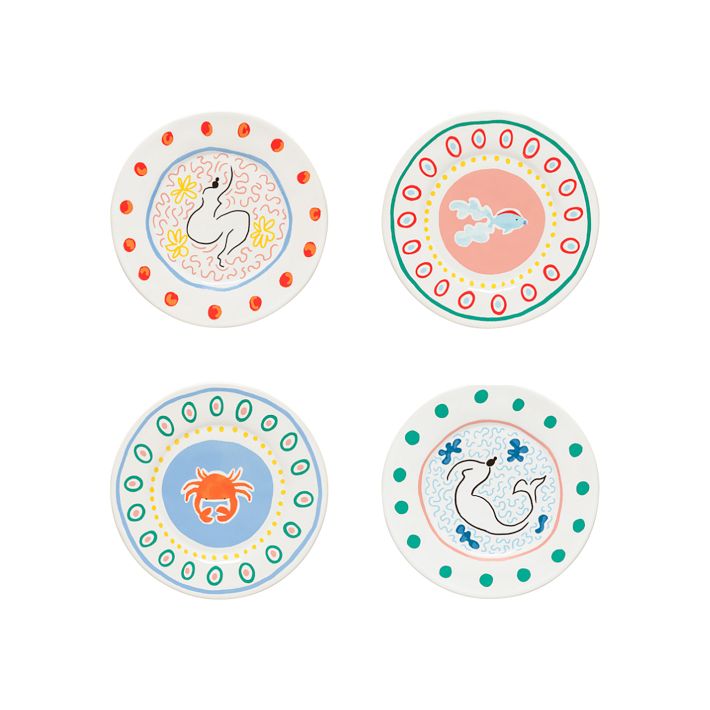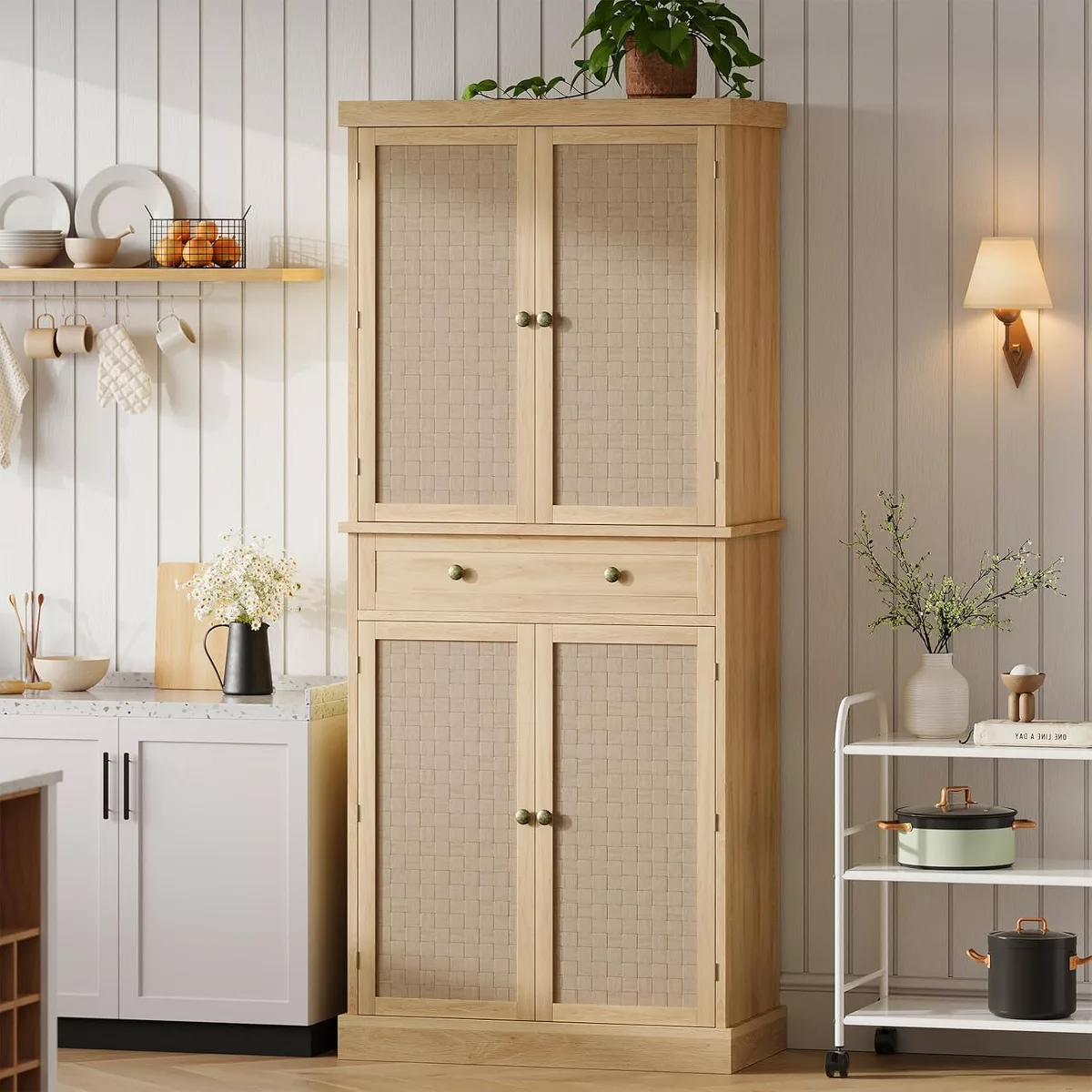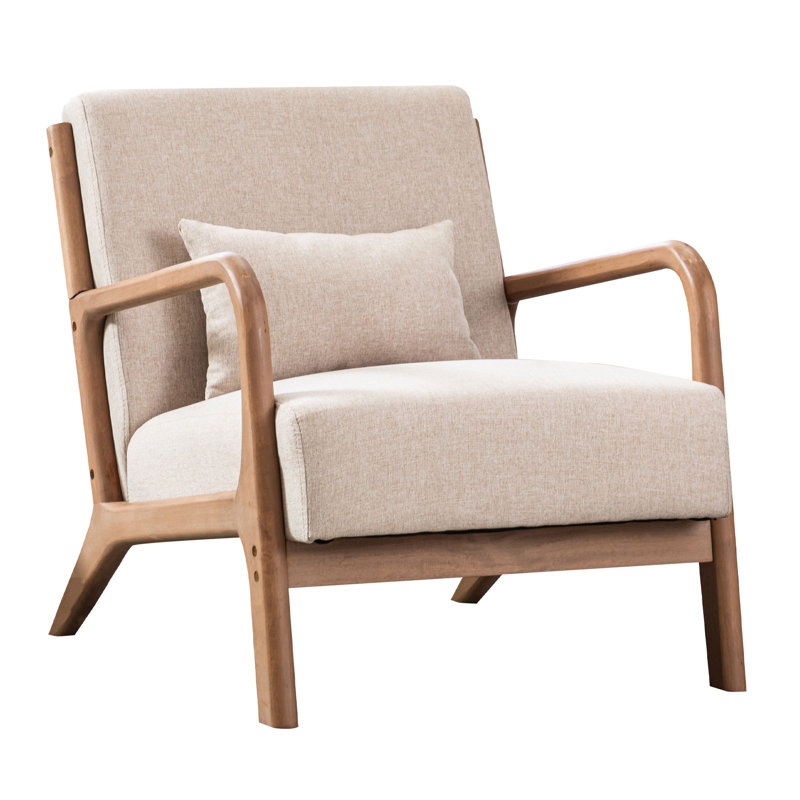The Rise of the 'Soft Kitchen' – Why We All Want Our Hardworking Spaces to Feel More Like a Living Room (and How Designers Are Embracing the Switch)
Everything you need to know to create a cozy, inviting kitchen that feels like an extension of your living spaces


Kitchens have never been as inviting and lived-in as they are now. No longer do our cooking spaces feel cold, sterile, and filled with hard lines – instead, they are softening, becoming cozier rooms that we actually want to spend time in, almost like an extension of a living room.
Which is why we are currently seeing the rise of the soft kitchen, an ode to comfortable interiors and celebrating the kitchen as the heart of the home. And it's a shift that interior designers are enjoying and encouraging.
But what makes a kitchen 'soft' and how can you create the look in your own home? Here's everything you need to know about this reimagined cozy kitchen look, and interior designers' favorite ways to decorate in the style.
What's the Appeal of a 'Soft Kitchen'?
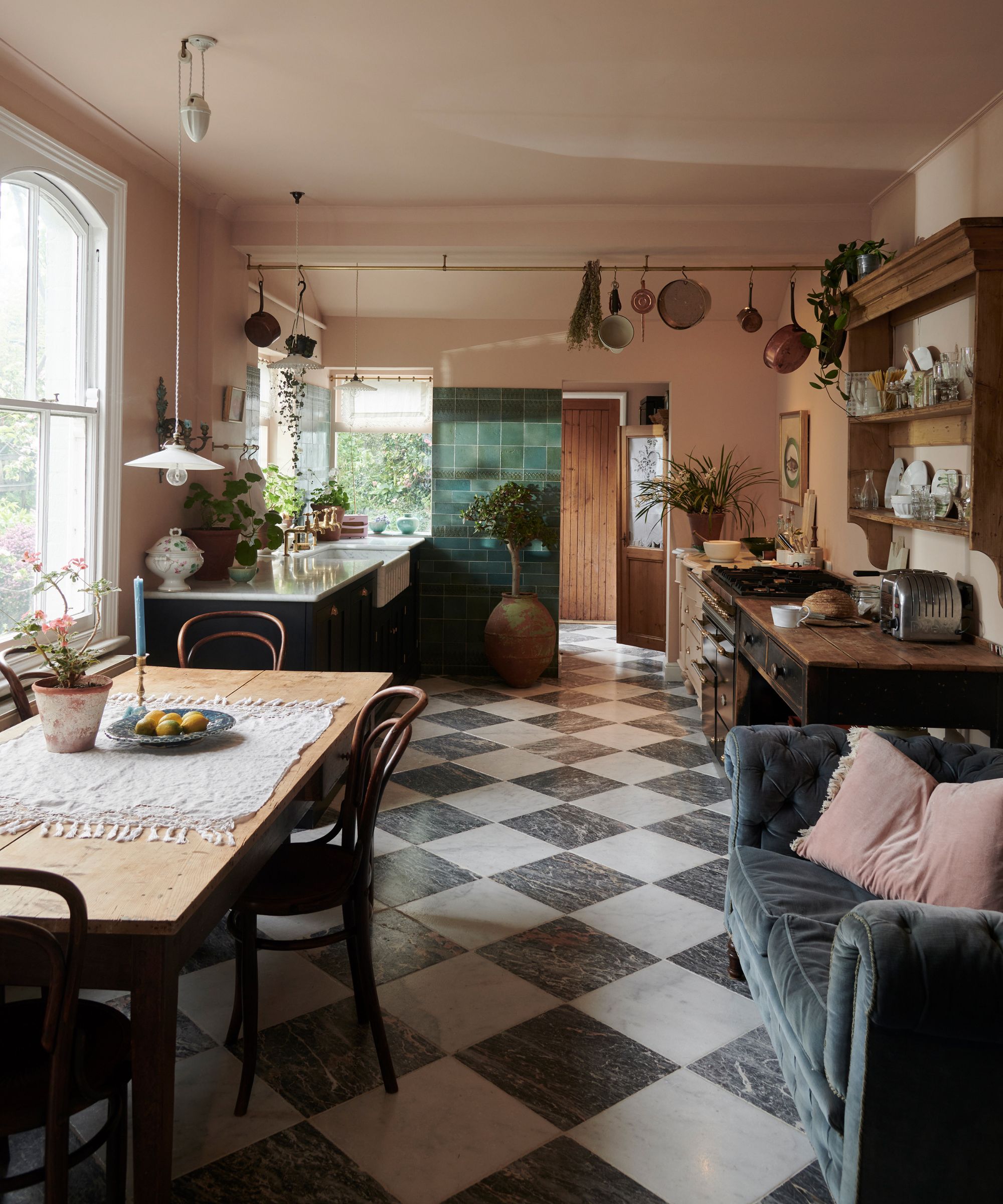
A soft kitchen really is as it sounds. Softer edges, warming colors, and cozy decor combine to create a space that, while still functional, doubles up as an inviting room to spend time in beyond cooking, dining, and cleaning.
It's about introducing softer elements, like throw cushions on seating, upholstered bar stools, layered window treatments, and even designing a space that hides appliances for a less functional look.
'Soft kitchens feel warmer, more relaxed, and more like living spaces than sleek, utilitarian kitchens. The appeal lies in creating a space that feels social and inviting, reflecting how clients use the kitchen for gathering, working, and unwinding rather than just cooking,' explains Cath Beckett, co-founder of Yellow London.
'We achieve this through focusing on comfort and character. Natural materials, bursts of color, and layered textures help soften the space, while elements like upholstered seating, colorful rugs, wall or table lights, and artwork make it feel more homey.'
Design expertise in your inbox – from inspiring decorating ideas and beautiful celebrity homes to practical gardening advice and shopping round-ups.
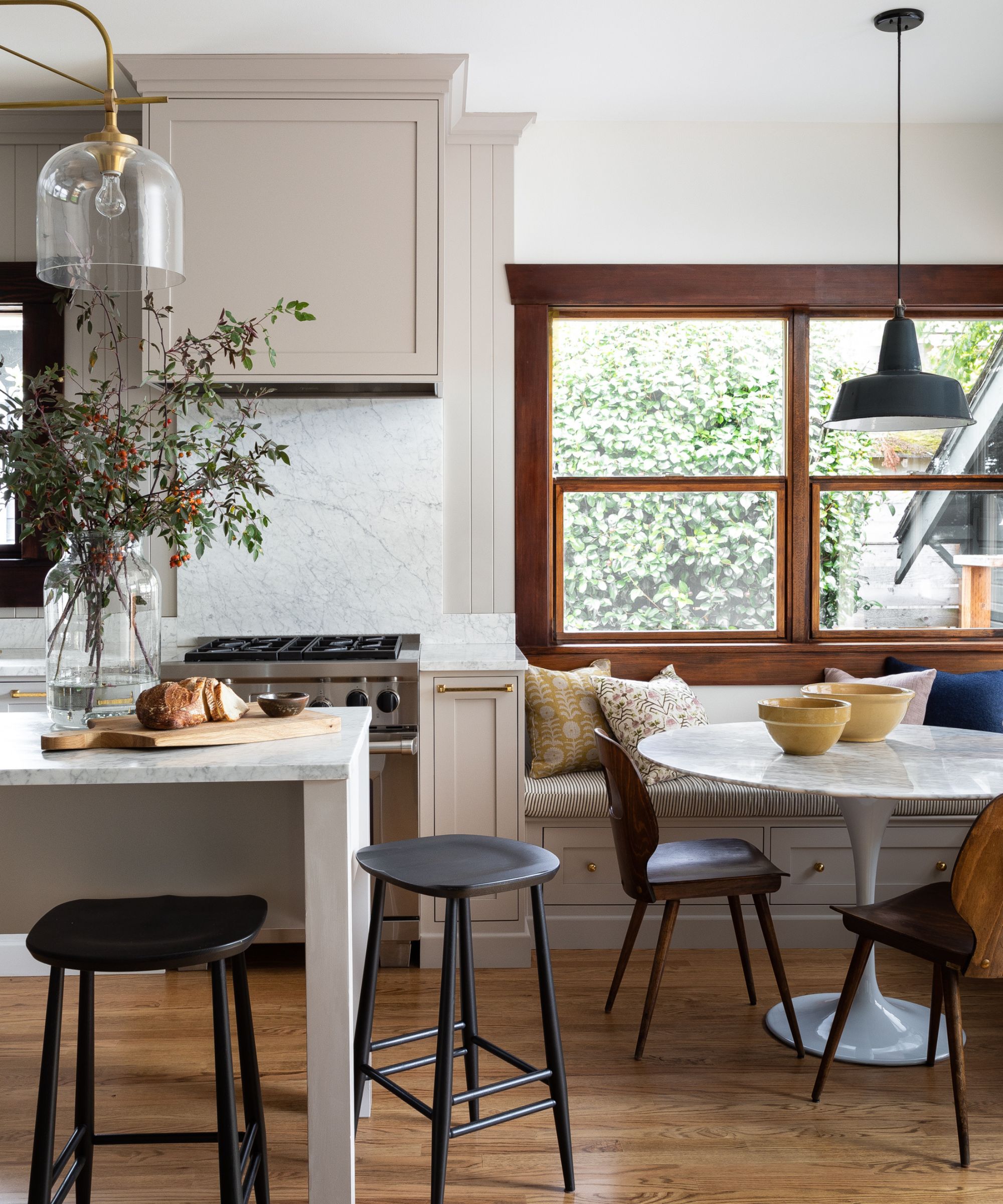
It coincides with the shift towards open plan and multi-functional spaces, which means our kitchens not only need to look more cohesive with our living spaces, but they also need to cater to our every need, whether it's a homework station-meets dining space, or a prep area that doubles as a home bar.
'In my opinion, kitchens are no longer just work zones; they’re the heart of the home. Clients want them to feel warm, inviting, and connected to the rest of their living spaces. A soft kitchen blurs the line between function and comfort; it’s where design meets daily life,' says Michelle Murphy, founder and designer at DEMI RYAN.
'Soft Kitchens are popular now because people are craving comfort and connection. After years of minimalist kitchens that felt a bit sterile, there’s a real desire for spaces that feel personal and lived-in. We’re seeing a shift toward texture, warmth, and character, layers of natural materials that age beautifully, and finishes that invite you in rather than keep you at arm’s length,' she adds.
How to Create a Soft Kitchen
Creating a soft kitchen is easier than you might expect. The features and details you introduce will depend on how much of a refresh you want to give your space, but designers assure it's an easy look to embrace.
'Kitchens have long been the heart of most homes. Given that we spend so much time here, it’s natural we’d want our kitchen to be a delightfully sensorial space that feels as good as it looks. Soft kitchens are warm and wonderfully inviting; they prioritize not only functionality but also the tactile experience of being in the space,' says interior designer Kathy Kuo.
From refined storage styles and freestanding furniture to natural materials and softer accents, here are five easy-to-achieve yet utterly stylish ways to soften your kitchen scheme.
1. Introduce Decorative Open Storage

Creating a soft kitchen starts in the bones of your scheme. Kitchen storage is a huge part of the functionality of your space, so consider how you can make it work harder as a decorative element, too.
'The key is to blend the practicality of a kitchen with the atmosphere of a living space. Open shelving, bookcases, glazed display cabinets, and carefully chosen decorative pieces also help soften the space,' says Tom Wicksteed, co-owner and director at 202 Design.
'Art, collected ceramics, and styled open shelving add soul. We also love bringing in furniture-like islands or vintage pieces to break up the expected cabinetry,' adds Michelle.
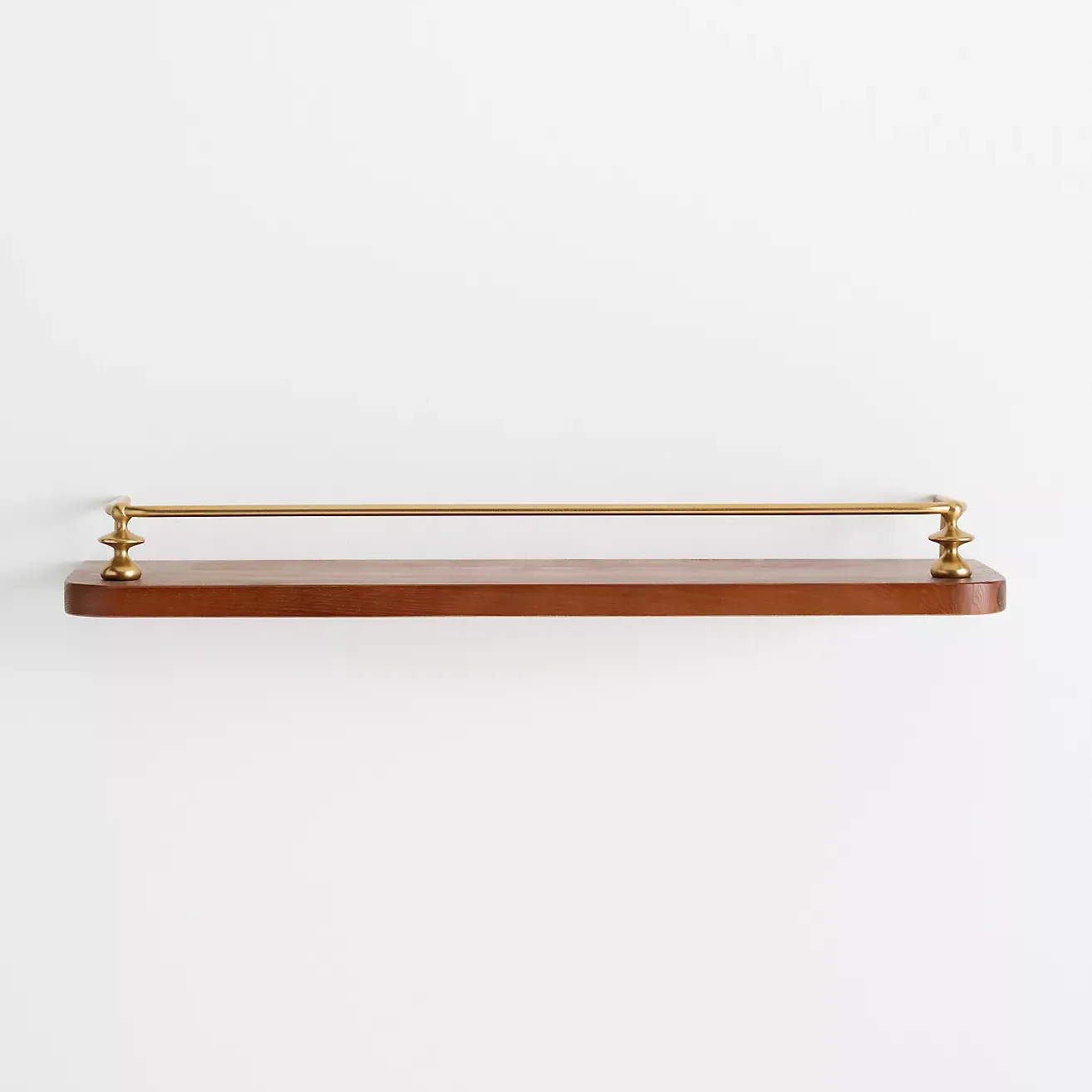
Open shelves with elegant gallery rails are a huge kitchen trend for 2026, and this design from Anthropologie is a great way to embrace the soft kitchen look. Perfect for displaying art, decor, and stylish kitchenware.
2. Decorate with Warm, Natural Materials

Texture and materials play a huge part in a soft kitchen. These small details are what create cozier, more inviting schemes that read more like a living space than a utilitarian one.
'If you love the ambiance of a snug, soft kitchen, choose natural materials that imbue a sense of rustic nostalgia. Opt for the warmth of pieces like a reclaimed wood dining table, antique brass hardware, and textural rattan lampshades,' suggests Kathy.
This kitchen is a charming example, where a warm color palette combines with natural materials through the rattan pendant lights (the Marion Woven Cone Pendant from Pottery Barn is a timeless choice) and the rustic wooden countertop on the kitchen island. These more tactile materials instantly feel soft, inviting, and far from sterile.
3. Layer Your Kitchen Lighting

We always talk about the effect a well-considered and curated lighting scheme can have on the overall atmosphere in a kitchen, and it's a key element to make your kitchen feel softer. And it's all about layered lighting.
'Bring in warm task lighting with a table lamp on the counter or island, and install dimmer switches (or use dimmable bulbs) so you can control the intensity of the light at any given time. And, of course, decorate with candles liberally (truly, the more candlelight, the better!),' says Kathy.
Take it one step further by introducing tactile materials through your lighting, like in this design. A fabric pendant light above an island, like the Allegra Rattan and Linen Dome Pendant by Jake Arnold, instantly feels softer, while a counter lamp creates the cozier ambiance typical of a living room. Something portable, like this Tall Rechargeable Lamp and Putty Lotus Shade from Mrs Alice, is a stylish choice.
4. Incorporate Cozy Textiles
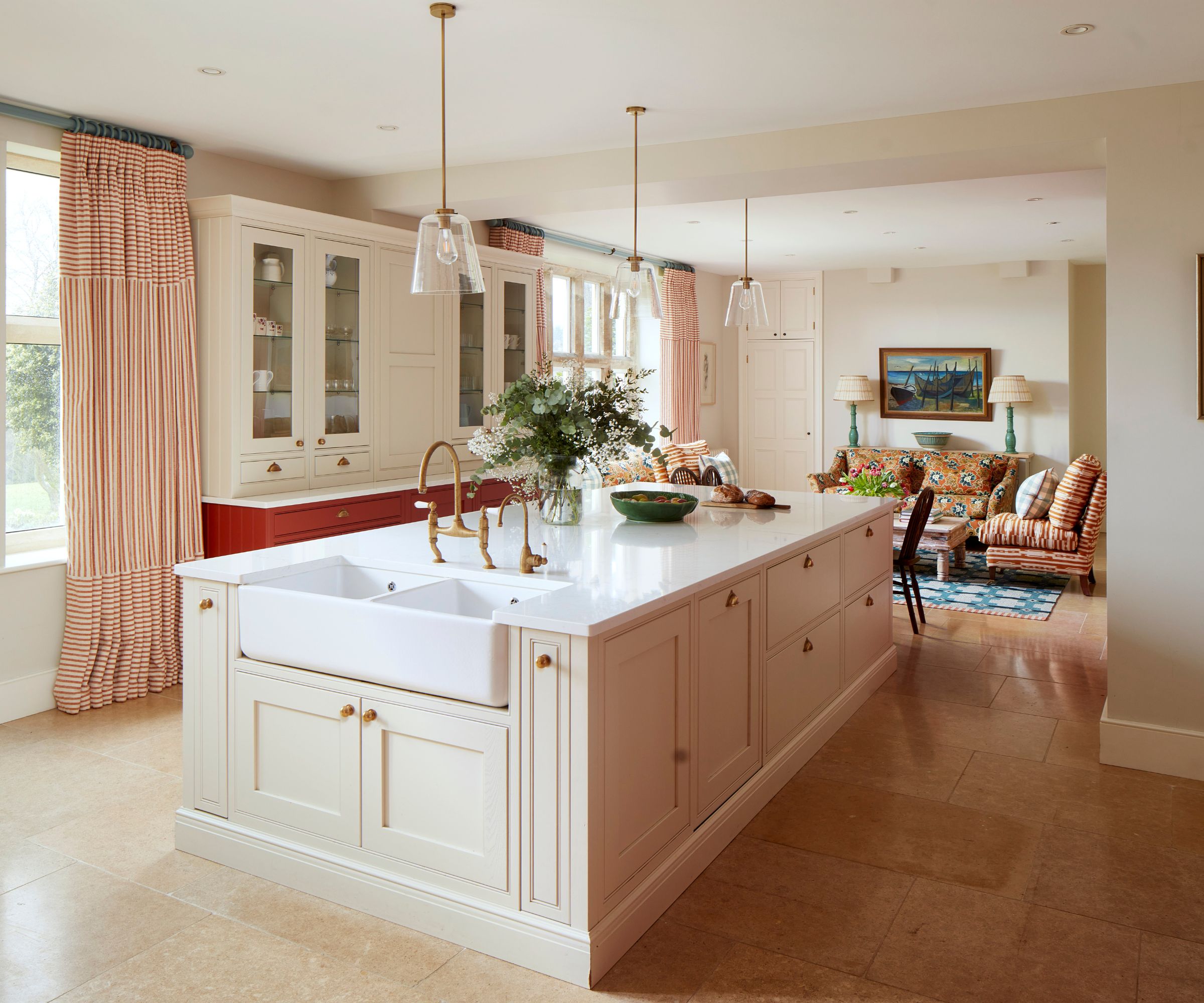
Perhaps an obvious point, but if you want to create a soft kitchen, you'll need to introduce soft features. Rugs, linens, curtains, and even upholstered furniture all come into play here, blending style and function seamlessly.
'When it comes to textiles, incorporate soft runners in kitchen walkways and area rugs in breakfast nooks. Add plush seat cushions to counter stools and dining chairs, and top benches or banquettes with a smattering of throw pillows. Hang floor-to-ceiling drapery above large windows and French doors, and accent small windows with charming café curtains,' says Kathy.
'Don’t be afraid to introduce color or pattern through textiles and upholstery. Try something as simple as a kitchen rug underfoot or framed art can shift the mood instantly,' Michelle suggests.
5. Mix in Custom Features and Freestanding Furniture

Removing harsher materials that you typically find in a kitchen will also help to create that softer look. For Tom, that means looking towards the utilitarian elements of the design and finding ways of making them softer.
'We are using elements such as decorated extractor housings rather than stainless steel canopies, built-in banquette seating, low-level and accent lighting, and soft furnishings such as armchairs or upholstered seating,' explains Tom.
Swapping colder tones like steel for natural options like wood instantly feels a bit more inviting and softens the kitchen almost instantly. Mixing freestanding furniture into your kitchen also creates a cozier, more lived-in feel, whether it's a freestanding island or a beautiful pantry cupboard to break up the continuous line of built-ins.
The rise of soft kitchens reflects the evolution of our cooking spaces from purely utilitarian to something cozier and more lived-in. It's about embracing natural materials, cozy texture, and warm colors to create a kitchen that becomes an extension of our living spaces.

I’ve worked in the interiors magazine industry for the past five years and joined Homes & Gardens at the beginning of 2024 as the Kitchens & Bathrooms editor. While I love every part of interior design, kitchens and bathrooms are some of the most exciting to design, conceptualize, and write about. There are so many trends, materials, colors, and playful decor elements to explore and experiment with.
You must confirm your public display name before commenting
Please logout and then login again, you will then be prompted to enter your display name.

